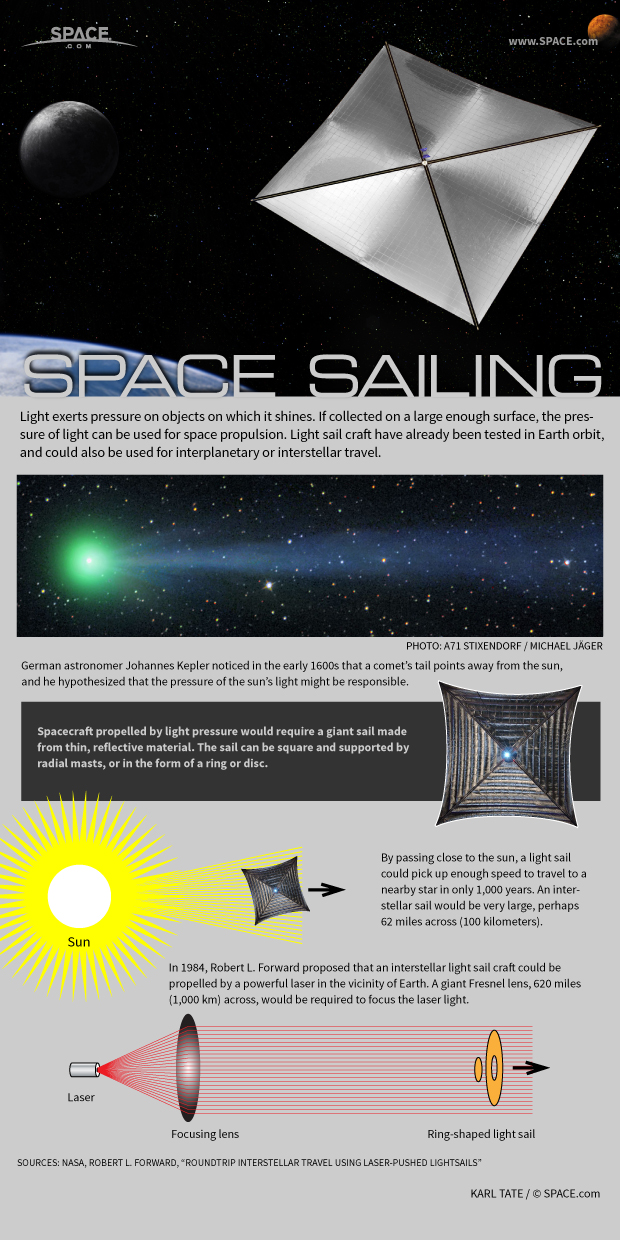Incredible Tech: How Interstellar Light-Propelled Sailing Works (Infographic)

Light exerts pressure on objects on which it shines. If collected on a large enough surface, the pressure of light can be used for space propulsion. Light sail craft have already been tested in Earth orbit and could also be used for interplanetary or interstellar travel.
German astronomer Johannes Kepler noticed in the early 1600s that a comet’s tail points away from the sun, and he hypothesized that the pressure of the sun’s light might be responsible.
Spacecraft propelled by light pressure would require a giant sail made from thin, reflective material. The sail can be square and supported by radial masts, or in the form of a ring or disc.
By passing close to the sun, a light sail could pick up enough speed to travel to a nearby star in only 1,000 years. An interstellar sail would be very large, perhaps 62 miles (100 kilometers) or more across.
In 1984, Robert L. Forward proposed that an interstellar light sail craft could be propelled by a powerful laser in the vicinity of Earth. A giant Fresnel lens, 620 miles (1,000 km) across, would be required to focus the laser light.
— The Top 10 Star Trek Technologies
— Gallery: Visions of Interstellar Flight
— Solar Sails Could Clean Up Space Junk
— 10 Sci-Fi Predictions That Came True
Follow us @Spacedotcom, Facebook and Google+.
Join our Space Forums to keep talking space on the latest missions, night sky and more! And if you have a news tip, correction or comment, let us know at: community@space.com.
Get the Space.com Newsletter
Breaking space news, the latest updates on rocket launches, skywatching events and more!

Karl's association with Space.com goes back to 2000, when he was hired to produce interactive Flash graphics. From 2010 to 2016, Karl worked as an infographics specialist across all editorial properties of Purch (formerly known as TechMediaNetwork). Before joining Space.com, Karl spent 11 years at the New York headquarters of The Associated Press, creating news graphics for use around the world in newspapers and on the web. He has a degree in graphic design from Louisiana State University and now works as a freelance graphic designer in New York City.
